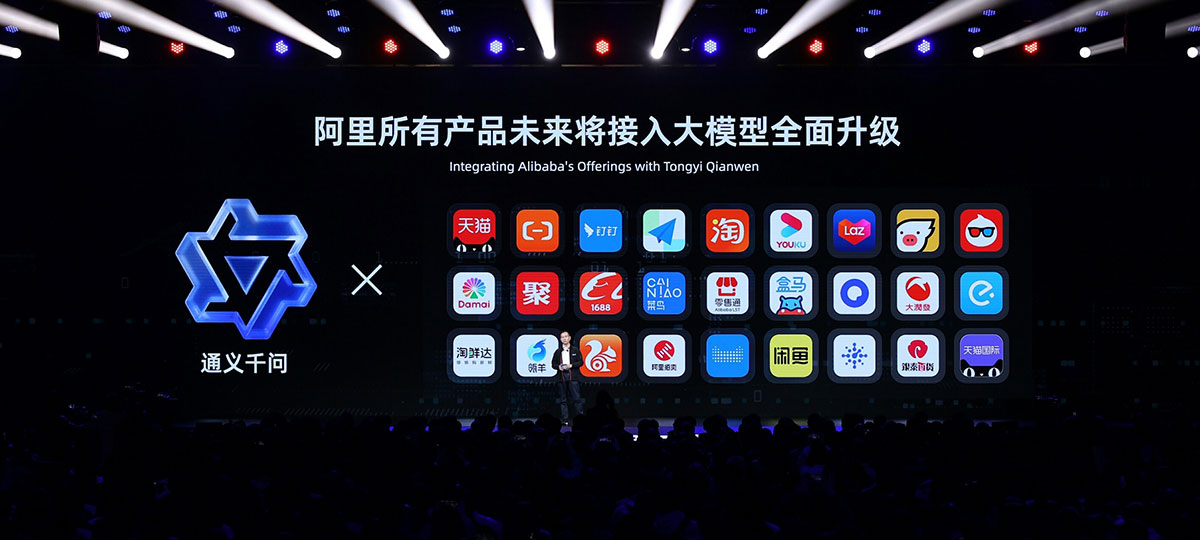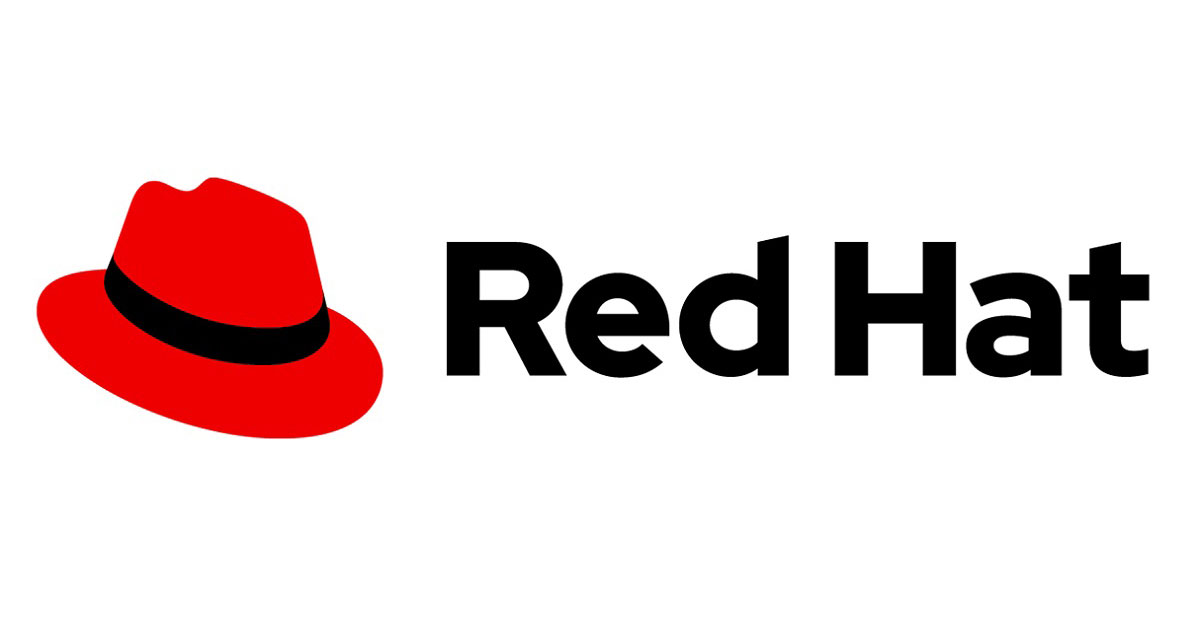ทั้งกำไรทั้งยั่งยืน เกิดพร้อมกันได้จริงหรือ
บทความโดย เทอร์รี สมา, รองประธานอาวุโสและผู้จัดการทั่วไป ประจำภูมิภาคเอเชียแปซิฟิกและญี่ปุ่น, บริษัทอินฟอร์
มีการคาดการณ์ว่า ภายในปี พ.ศ. 2593 จำนวนประชากรโลกจะเพิ่มขึ้นกว่า 9 พันล้านคน ทั้งนี้ องค์การอาหารและการเกษตรแห่งสหประชาชาติ (FAO) ประเมินว่าโลกจะต้องผลิตอาหารเพิ่มขึ้นถึง 60% เพื่อเลี้ยงปากท้องของทุกคน การเพิ่มปริมาณการผลิตอย่างมหาศาลจะส่งผลเสียแก่โลกอย่างแน่นอน เมื่อผนวกกับผลกระทบด้านการเปลี่ยนแปลงของสภาพภูมิอากาศต่อการเก็บเกี่ยว และความจำเป็นเร่งด่วนในการลดปริมาณขยะทั่วห่วงโซ่อาหาร ดังนั้น จึงเป็นเรื่องง่ายที่จะเข้าใจถึงเหตุผลที่อุตสาหกรรมอาหารและเครื่องดื่มกำลังตกอยู่ภายใต้แรงกดดันที่มากขึ้นในการนำความยั่งยืนเข้ามาเป็นส่วนหนึ่งในการดำเนินธุรกิจ
ภายใต้แรงกดดันด้านซัพพลายเชน ความต้องการและรสนิยมของลูกค้าที่ผันผวนตลอดเวลา ผนวกกับการกำหนดราคาที่ไม่เป็นธรรมสำหรับคู่ค้า หมายความว่าธุรกิจอาหารและเครื่องดื่มจะต้องดำเนินงานให้ประสบความสำเร็จด้วยการเพิ่มประสิทธิภาพและผลผลิตโดยลดปัจจัยและทรัพยากรต่าง ๆ ให้น้อยลง ทั้งนี้ เป็นที่คาดกันว่าอุตสาหกรรมอาหารและเครื่องดื่มจะต้องเพิ่มการรับรองด้านความยั่งยืนให้มากขึ้น แต่ในขณะเดียวกันก็ต้องทำงานอย่างหนักเพื่อจะได้ประหยัดเงินและรักษาผลกำไรไว้ให้ได้ แม้ตลาดต้องเผชิญกับความท้าทายที่วุ่นวายที่สุดก็ตาม
ปัญหาในเรื่องนี้ทำให้หลายคนเกิดคำถามขึ้นมากมายว่า จะเป็นไปได้จริงหรือที่จะดำเนินธุรกิจที่ได้ท้้งความยั่งยืนแถมยังทำกำไรได้อีกด้วย บ้างก็ว่าไม่มีทางที่จะเป็นไปได้ ซึ่งในความเป็นจริงผู้ประกอบการก็ไม่มีทางเลือกอื่นอีกแล้ว เพราะความยั่งยืนไม่ได้เป็นเพียงแค่สิ่งที่ ‘น่ามี’ หากแต่กำลังกลายเป็นองค์ประกอบสำคัญในการดำเนินธุรกิจภาคอาหารและเครื่องดื่มอย่างรวดเร็ว ผู้ประกอบการต้องผลิตอาหารให้เพียงพอเพื่อเลี้ยงดูประชากรที่กำลังเพิ่มจำนวนขึ้นเรื่อย ๆ ควบคู่ไปกับการลดผลกระทบจากกิจกรรมต่าง ๆ ที่ส่งผลต่อระบบนิเวศโดยจะต้องรักษาผลกำไรที่ดีไว้ให้ได้ด้วย
นวัตกรรมก็คือคำตอบสำหรับเรื่องนี้ ด้วยการนำเทคโนโลยีที่เหมาะสมไปใช้งานในทางที่ถูกต้อง เพื่อเพิ่มผลผลิตสูงสุด ลดของเสีย ตลอดจนเพิ่มประสิทธิภาพในการปฏิบัติงาน ซึ่งทั้งหมดนี้จะช่วยสนับสนุนให้ภาคอาหารและเครื่องดื่มสามารถดำเนินธุรกิจได้อย่างยั่งยืนและได้กำไรในที่สุด
ความยั่งยืนเป็นความสำคัญเร่งด่วน
แน่นอนว่าความยั่งยืนไม่ใช่เรื่องใหม่สำหรับอุตสาหกรรมอาหารและเครื่องดื่ม ทั้งนี้ได้มีการยกระดับความสำคัญของประเด็นนี้ไปอยู่ในลำดับต้น ๆ โดยเฉพาะอย่างยิ่งในช่วงสองสามปีที่ผ่านมา เพราะเราไม่เพียงแต่ต้องคาดการณ์ถึงการผลิตอาหารเพิ่มขึ้น 60% และผลกระทบต่อสิ่งแวดล้อมเท่านั้น แต่ยังต้องคำนึงถึงขยะอาหารปริมาณมหาศาลด้วย เนื่องจากประมาณหนึ่งในสามของอาหารที่ผลิตได้ทั้งหมดทั่วโลกในแต่ละปีจะถูกทิ้งไปโดยเปล่าประโยชน์ (ซึ่งเป็นจำนวนที่คาดว่าสูญเสียไประหว่างการขนส่งที่การวางแผนและการแช่เย็นที่ไม่ดีพอ รวมถึงขยะอาหารที่เกิดขึ้นระหว่างการผลิตด้วย) ผู้บริโภคที่คำนึงถึงเรื่องความยั่งยืนมีจำนวนเพิ่มขึ้นเมื่อต้องเลือกซื้อผลิตภัณฑ์ และจะยิ่งพิจารณามากขึ้นหากแบรนด์นั้น ๆ พิสูจน์ให้เห็นถึงการรองรับความยั่งยืนของตน
ส่วนแรงกดดันด้านกฎระเบียบเพื่อความยั่งยืนก็มีแต่จะเพิ่มมากขึ้นเรื่อย ๆ ระบบซัพพลายเชนด้านอาหารและเครื่องดื่มมีความเป็นสากลทั่วโลก ดังนั้น ธุรกิจที่ต้องการดำเนินงานต่อในตลาดต่างประเทศจะสามารถปรับข้อกำหนดด้านความยั่งยืนเฉพาะประเทศและของท้องถิ่น ให้ใช้ร่วมกับการค้าข้ามแดนได้อย่างรวดเร็ว สำหรับราคาพลังงานที่พุ่งสูงก็เป็นอีกปัจจัยหนึ่งที่ส่งผลให้ธุรกิจจำนวนมากขึ้นต้องให้ความสำคัญกับประสิทธิภาพในการใช้พลังงาน จนเกือบจะกลายเป็นธุรกิจที่เป็นมิตรกับสิ่งแวดล้อมไปโดยปริยาย ซึ่งเป็นผลสืบเนื่องจากความพยายามในหลาย ๆ ด้านเพื่อลดค่าใช้จ่ายทางธุรกิจ กล่าวโดยสรุปคืออุตสาหกรรมอาหารฯ กำลังได้รับแรงกดดันจากทุกฝ่ายให้ดำเนินการอย่างเป็นมิตรต่อสิ่งแวดล้อมมากขึ้นนั่นเอง
ความยั่งยืนเป็นปัจจัยส่งเสริมการเติบโต
เมื่อพิจารณาเรื่องความยั่งยืน การศึกษาถึงประโยชน์ทางธุรกิจต่าง ๆ ที่จะได้รับจากการนำความยั่งยืนมาใช้ในการดำเนินงานถือเป็นเรื่องสำคัญ เนื่องจากแนวทางนี้จะช่วยสร้างกรณีศึกษาทางธุรกิจที่น่าสนใจสำหรับการลงทุนในโครงการด้านสิ่งแวดล้อมต่าง ๆ
เช่นเดียวกับอุตสาหกรรมอื่น ๆ ธุรกิจอาหารและเครื่องดื่มที่แสดงให้เห็นถึงความมุ่งมั่นด้านสิ่งแวดล้อมจะได้รับโอกาสทางการเงินมากขึ้น นอกจากนี้ ยังมีเรื่องราคาของวัตถุดิบจากแหล่งไม่ยั่งยืนที่มีราคาแพงและจะยิ่งแพงขึ้นเรื่อย ๆ ดังนั้นจึงไม่ต้องสงสัยเลยว่าการลดของเสียจะทำให้ธุรกิจได้กำไรเพิ่มขึ้น ทั้งนี้ มีธุรกิจอาหารที่สร้างสรรค์บางรายถึงกับใช้ประโยชน์จากผลพลอยได้เปลี่ยนเป็นช่องทางรายรับเพิ่มเติมให้กับบริษัทได้ด้วย
ทั้งนี้ ในบางครั้งสิ่งสำคัญที่สุดคือความต้องการของผู้บริโภคที่ต้องการใช้ผลิตภัณฑ์ที่เป็นมิตรต่อสิ่งแวดล้อมมากขึ้น ดังนั้นธุรกิจที่ใส่ใจเรื่องความยั่งยืนจะยังคงได้ส่วนแบ่งทางการตลาดเพิ่มขึ้น ปัจจุบันมีแบรนด์สินค้าจำนวนมากขึ้นเลือกทำงานร่วมกับซัพพลายเออร์ที่พิสูจน์ให้เห็นได้ชัดเจนว่า พวกเขากำลังทำทุกวิถีทางเพื่อลดผลกระทบต่อสิ่งแวดล้อม ควบคู่ไปกับการปฏิบัติตามมาตรฐานต่าง ๆ ด้านความยั่งยืน
ไม่ใช่ทางเลือกอีกต่อไป
ถึงเวลาแล้วที่อุตสาหกรรมอาหารและเครื่องดื่มจะต้องยอมรับเรื่องความยั่งยืน หากต้องการมุ่งเน้นที่การเติบโตทางธุรกิจในระยะยาว จะต้องไม่ใช่เพียงแค่การปฏิบัติตามข้อบังคับด้านกฎระเบียบหรือการลดต้นทุนเท่านั้น ดังนั้นเพื่อตอบคำถามนี้ในเบื้องต้น เราไม่ควรคิดถึงปัญหานี้ในแง่ความยั่งยืนกับความสามารถในการทำกำไร จริง ๆ แล้วภาคอาหารและเครื่องดื่มควรจะตระหนักได้อย่างชัดเจนว่า ความยั่งยืนเปรียบเสมือนความสามารถในการทำกำไรจะเหมาะกว่า
การประเมินความเสี่ยงอย่างยั่งยืน
ความต้องการด้านความยั่งยืนที่เพิ่มขึ้นนี้ไม่ได้เปลี่ยนความจริงที่ว่า สำหรับบางธุรกิจการนำความยั่งยืนมาปรับใช้ในการดำเนินงานเป็นเรื่องใหญ่ที่ทำได้ยากและอาจจะต้องลงทุนมหาศาล แต่ในความเป็นจริงแล้วไม่ได้เป็นเช่นนั้นเลย เพราะความคิดริเริ่มด้านสิ่งแวดล้อมที่มีขนาดเล็กกว่าและตรงเป้าหมายมากกว่า มักจะเป็นกุญแจสำคัญที่นำไปสู่การสร้างความแตกต่างอย่างแท้จริง
ธุรกิจที่ไม่ต้องการมีส่วนร่วมในความพยายามด้านความยั่งยืนจะต้องประเมินความเสี่ยงที่อาจเกิดขึ้นอย่างถี่ถ้วนก่อนตัดสินใจ โดยอาศัยข้อมูลที่ไม่ได้มาจากธุรกิจของตนเท่านั้น แต่ต้องเป็นข้อมูลที่ได้มาจากทั่วทั้งระบบซัพพลายเชน เพื่อทำให้ธุรกิจนั้น ๆ เข้าใจถึงความเสี่ยงอย่างถ่องแท้หากไม่ต้องการมีส่วนร่วมด้านความยั่งยืน ทั้งนี้ ข้อมูลจะแสดงให้เห็นอย่างชัดเจนถึงเหตุผลที่ความยั่งยืนเป็นปัจจัยสำคัญต่อการเติบโตและทำกำไร และทำให้ธุรกิจมั่นใจในการตรวจสอบการดำเนินการด้านสิ่งแวดล้อม (environmental footprints) ของตนในปัจจุบัน พร้อมช่วยระบุโครงการต่าง ๆ ที่จะส่งผลกระทบสูงสุดทั้งในด้านความยั่งยืนและความสามารถในการทำกำไร
ดังนั้น กุญแจสำคัญสำหรับเรื่องนี้ก็คือการใช้เทคโนโลยีเพื่อทำงานร่วมกันทั่วทั้งซัพพลายเชน ซึ่งเป็นแกนหลักสำคัญของอุตสาหกรรมอาหารและเครื่องดื่มที่เต็มไปด้วยความซับซ้อนและแง่มุมต่าง ๆ มากมาย และเมื่อมาถึงจุดที่ต้องการทราบอย่างชัดเจนว่า ธุรกิจจะก่อให้เกิดผลกระทบต่อสิ่งแวดล้อมในด้านใดบ้าง และจะลดผลกระทบนี้ให้เหลือน้อยที่สุดได้อย่างไรโดยที่ยังคงรักษาผลกำไรไว้ได้ ขั้นตอนแบบแมนนวลและการใช้สเปรดชีตก็จะไม่เหมาะกับงานประเภทนี้อีกต่อไป
แปลงข้อมูลให้เป็นข้อมูลเชิงลึก
เราทุกคนต่างต้องรับมือกับข้อมูลจำนวนมหาศาล การรู้วิธีใช้ข้อมูลที่อยู่ในมือจะสามารถสร้างความแตกต่างได้ สิ่งที่จำเป็นสำหรับเรื่องนี้คือโซลูชันที่มีความสามารถด้านความยั่งยืนติดตั้งมาในตัวเบ็ดเสร็จที่สามารถรวบรวมข้อมูลจากหลายแหล่งเพื่อให้ได้มุมมองที่ครอบคลุม และสามารถวิเคราะห์ข้อมูลเพื่อระบุแนวโน้มและโอกาสในการปรับปรุงความยั่งยืน และเป็นเทคโนโลยีที่จะเติบโตควบคู่ไปกับธุรกิจพร้อมกับกฎหมายและข้อกำหนดต่าง ๆ ในการปฏิบัติงานที่เปลี่ยนแปลงอย่างรวดเร็ว การใช้เทคโนโลยีแมชชีนเลิร์นนิงกับแหล่งข้อมูลที่ครอบคลุมเป็นหนึ่งเดียวกับซัพพลายเชน จะทำให้มีข้อมูลเชิงลึกใหม่ ๆ ที่นำไปใช้งานได้จริง และจะแสดงให้เห็นถึงรูปแบบของโครงการหรือความคิดริเริ่มด้านความยั่งยืนที่เหมาะสมที่สุดต่อการลดผลกระทบต่อสิ่งแวดล้อมโดยที่องค์กรยังคงเพิ่มผลกำไรได้ในเวลาเดียวกัน
เช่น การคาดการณ์ล่วงหน้าที่แม่นยำขึ้นจะช่วยลดของเสียในทุกขั้นตอนของระบบซัพพลายเชนได้ อีกทั้งยังช่วยประหยัดต้นทุนที่เกิดขึ้นระหว่างการผลิตที่มากหรือน้อยจนเกินไป นอกจากการเพิ่มประสิทธิภาพผลผลิตจะเป็นประโยชน์ต่อสภาพแวดล้อมและผลกำไรแล้ว ข้อมูลเชิงลึกที่ถูกต้องยังช่วยให้ธุรกิจสามารถปรับเพิ่มประสิทธิภาพการดำเนินงานได้อีกด้วย ในทำนองเดียวกัน การเข้าถึงข้อมูลที่ครอบคลุมทั้งระบบซัพพลายเชนที่รองรับนวัตกรรมต่าง ๆ เช่น วันหมดอายุแบบไดนามิกที่ปรับได้ตามคุณภาพของผลิตภัณฑ์และชั้นวางสินค้าอัจฉริยะ รวมทั้งการช่วยให้ธุรกิจสามารถให้ข้อมูลแหล่งที่มาที่สำคัญทั้งหมดแก่ลูกค้า ซึ่งทั้งหมดที่กล่าวมานี้ล้วนมีส่วนช่วยให้อุตสาหกรรมอาหารและเครื่องดื่มลดผลกระทบด้านสิ่งแวดล้อมได้ โดยในขณะเดียวกันก็สามารถตอบสนองความต้องการของลูกค้าทำให้เกิดความพึงพอใจมากขึ้น ซึ่งในบางครั้งอาจจะเกินความคาดหวังไปเสียด้วยซ้ำ
หากอุตสาหกรรมอาหารฯ ต้องการมีส่วนร่วมในการปกป้องอนาคตโลกโดยที่ยังคงรักษาผลกำไรไว้ได้สิ่งสำคัญคืออุตสาหกรรมอาหารฯ จะต้องมีการมองเห็นภาพรวมทั้งระบบ มีการทำงานร่วมกัน และมีการใช้ข้อมูลเชิงลึกประกอบการตัดสินใจ ปัจจุบันมีเทคโนโลยีที่ใช้ประโยชน์จากข้อมูลจำนวนมหาศาลได้อย่างเต็มที่ ดังนั้นการลงทุนในโครงการเพื่อความยั่งยืนจึงเป็นวิธีที่คุ้มค่าที่สุดในการสร้างผลกำไรระยะยาวเพราะข้อมูลเชิงลึกที่ถูกต้องจะเป็นพื้นฐานสำหรับการตัดสินใจโดยอาศัยข้อมูลที่ครบถ้วนอย่างแท้จริงช่วยให้องค์กรบรรลุผลลัพธ์ที่ยั่งยืนที่สุดภายใต้ข้อจำกัดและพารามิเตอร์ของแต่ละธุรกิจ เกิดความมั่นคงและการเติบโตที่ให้ผลกำไรในระยะยาวตลอดทุกขั้นตอนการดำเนินงาน




